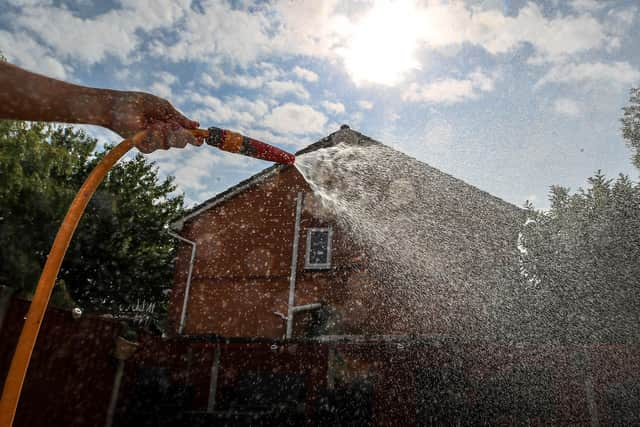Tens of thousands of people in Bedford vulnerable to soaring temperatures
and live on Freeview channel 276
Tens of thousands of people living in Bedford are at risk of the worst effects of soaring temperatures as climate change threatens people's health, new figures suggest.
As the Met Office says the first predicted 40C temperatures in the UK are a sign that the impact of climate change is here, Friends of the Earth say extreme heatwaves will become much more frequent as the climate crisis worsens.
Advertisement
Hide AdAdvertisement
Hide AdAnalysis by the campaign group shows that more than 6 million people across England will be vulnerable to extreme temperatures caused by global warming.


The areas most vulnerable include 20 Bedford neighbourhoods which are "at risk" of rocketing temperatures in the coming years – including 12,808 homes, based on 2011 estimates.
And 33,758 people lived in these neighbourhoods, according to 2020 estimates.
An "at risk" neighbourhood is an area that will experience extreme heat for more than five days every summer and has a vulnerable population, based on research from the University of Manchester – which looks at a variety of social and personal factors such as age, deprivation, housing characteristics and access to health services.
Advertisement
Hide AdAdvertisement
Hide AdHot weather places particular strain on the heart and lungs, and the Met Office warned that older people, young children and those with pre-existing health conditions are especially at risk.
Communities most vulnerable are generally those with an older population, a higher number of young children, without green spaces to shelter, and those with housing most susceptible to overheating, such as high rise buildings and mobile homes.
Extreme heat is defined as being above 27.5C with global warming of 1.5C, or above 30C with global warming of 3C.
More than six million people in England would be regularly exposed to very hot weather – temperatures greater than 27.5C – if global warming is limited to a rise of 1.5C, the current goal as set by the Paris Agreement and the United Nations Framework Convention on Climate Change.
Advertisement
Hide AdAdvertisement
Hide AdIf global warming was to reach 3C, 30 million would be at risk of dangerously hot weather – temperatures greater than 30C.
Friends of the Earth said extreme heatwaves will become much more frequent and severe, and urged the Government to act swiftly.
The Government has pledged to reduce emissions by at least 68% by 2030 and 78% by 2035 compared to 1990 levels, before reaching net zero by 2050.
Head of research, Mike Childs, said: "To prevent the most dangerous scenarios becoming a reality, all countries, including the UK, must make greater efforts to prevent runaway climate breakdown.
Advertisement
Hide AdAdvertisement
Hide Ad"Suggestions by some politicians that the UK should dial back on climate goals are short-sighted and reckless.
"People on the frontlines of the climate crisis in the UK and overseas are already being hit by its impacts, despite being the least responsible.
"We need governments to double-down on cutting emissions and providing funding for climate adaptation programmes."
A Government spokesperson said: "Thanks to government action, we have already driven down emissions by over 45% – the fastest reduction of any G7 country.
Advertisement
Hide AdAdvertisement
Hide Ad"Local areas have an integral part to play in tackling climate change, which is why significant funding is already available to councils for them to take local action, including £1.2 billion in dedicated funds for 2020-21."
